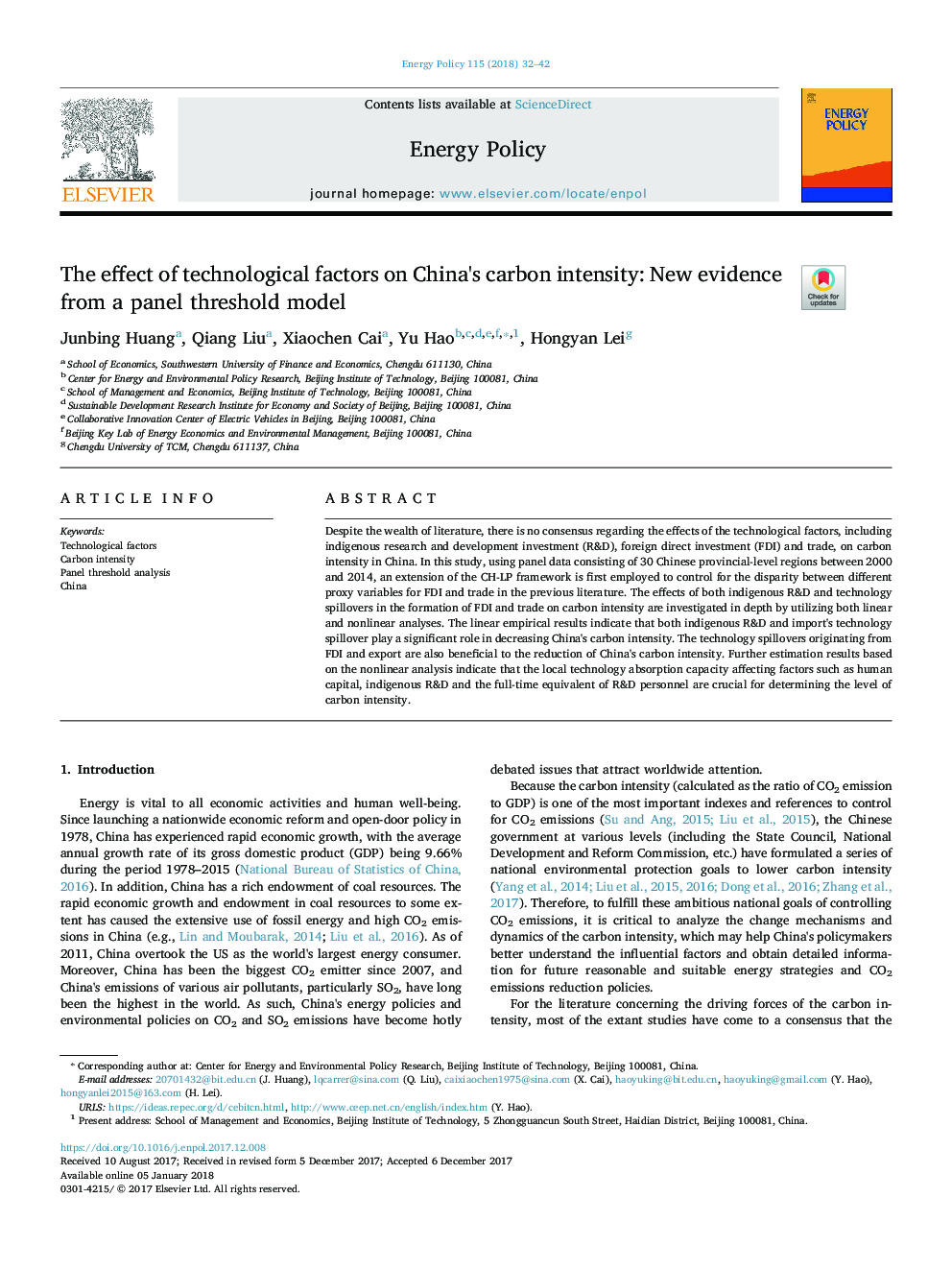| Article ID | Journal | Published Year | Pages | File Type |
|---|---|---|---|---|
| 7397627 | Energy Policy | 2018 | 11 Pages |
Abstract
Despite the wealth of literature, there is no consensus regarding the effects of the technological factors, including indigenous research and development investment (R&D), foreign direct investment (FDI) and trade, on carbon intensity in China. In this study, using panel data consisting of 30 Chinese provincial-level regions between 2000 and 2014, an extension of the CH-LP framework is first employed to control for the disparity between different proxy variables for FDI and trade in the previous literature. The effects of both indigenous R&D and technology spillovers in the formation of FDI and trade on carbon intensity are investigated in depth by utilizing both linear and nonlinear analyses. The linear empirical results indicate that both indigenous R&D and import's technology spillover play a significant role in decreasing China's carbon intensity. The technology spillovers originating from FDI and export are also beneficial to the reduction of China's carbon intensity. Further estimation results based on the nonlinear analysis indicate that the local technology absorption capacity affecting factors such as human capital, indigenous R&D and the full-time equivalent of R&D personnel are crucial for determining the level of carbon intensity.
Related Topics
Physical Sciences and Engineering
Energy
Energy Engineering and Power Technology
Authors
Junbing Huang, Qiang Liu, Xiaochen Cai, Yu Hao, Hongyan Lei,
